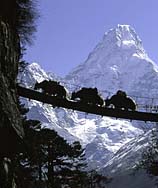
Nepal, the fabled land of Buddha, Hindu temples, and unrivaled mountain scenery, was controlled by a myriad of factions since the 4th century.
Little is known about Nepal's early history, however, it is known that the Kirant tribe inhabited the region more than 2,500 years ago.
Numerous small kingdoms laid claim to the region until 1482 when Nepal was split into three separate divisions: Kathmandu, Patan, and Bhaktapur.
The modern Nepalese state began in the late 18th century when King Prithvi Narayah Shah successfully unified most of the individual ethnic groups and small principalities into one entity.
In search of additional lands, Nepal ventured into India, subsequently losing part of its own territory to British India, but retaining its independence.
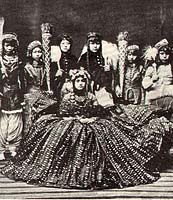
Nepal, at the time, was controlled by a monarch (for life and by hereditary right), but in 1951, the Nepalese monarch (under great pressure) ended that system of rule, and instituted a cabinet system of government.
Only one year after the country's first election in 1959, King Kahendra dismissed the cabinet, dissolved parliament and banned political parties.
Since 1990, turmoil and Nepal have traveled hand-in-hand, as a bloody insurgency, a royal family massacre and assorted governmental conflicts and squabbles have dominated the headlines.
In February 1996, a decade-long civil war broke out after members of the Maoist movement (Communist Party of Nepal) fought to replace Nepal's monarchy with a democracy.
As a result of the conflict, more than 15,000 were killed, and an additional 150,000 were internally displaced.
In early 2005 (once again) the king dissolved the government and assumed power. Little progress was made, and municipal elections held early in 2006 were widely regarded as "a backward step for democracy" by the European Union.
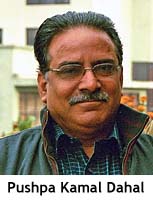
Change came in mid-2008, as the royal house was ousted by newly elected Prime Minister, Pushpa Kamal Dahal, and President Ram Bran Yadav, the first ever for Nepal.
In this poor country, the tourism industry was once a significant economic force, as backpackers, river rafters, mountain climbers and nature lovers trekked to Nepal in large numbers.
For the most part, the on-going fighting between the Maoist insurgency and government forces has devastated much of its worldwide tourism base, and yet, it remains on the front-burner of many adventure travelers, and certainly in the minds of all those who have previously ventured into Nepal.
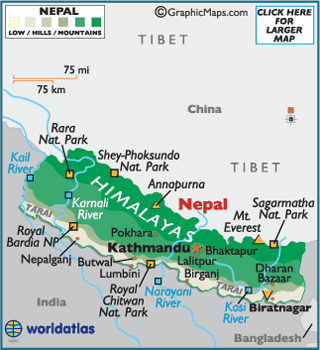
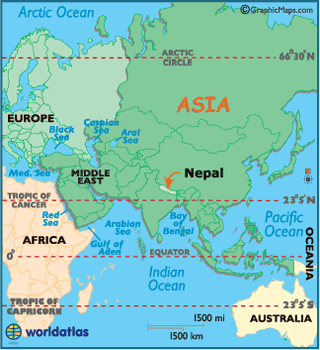






No comments:
Post a Comment